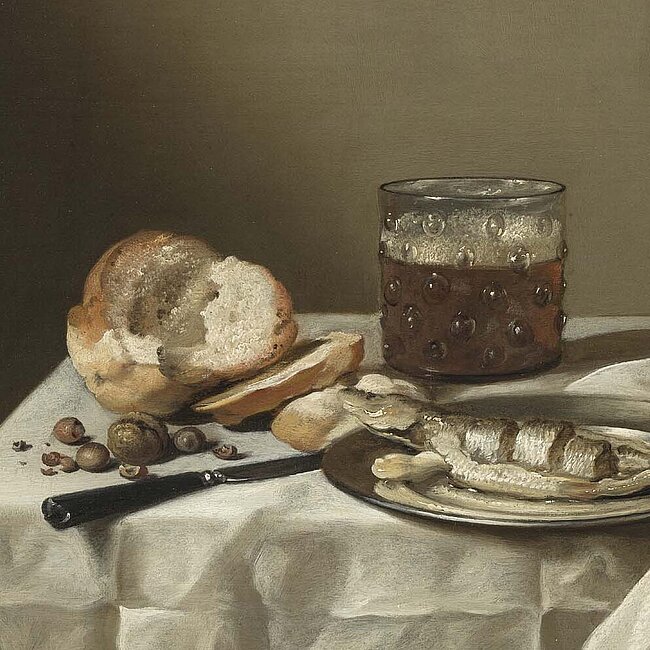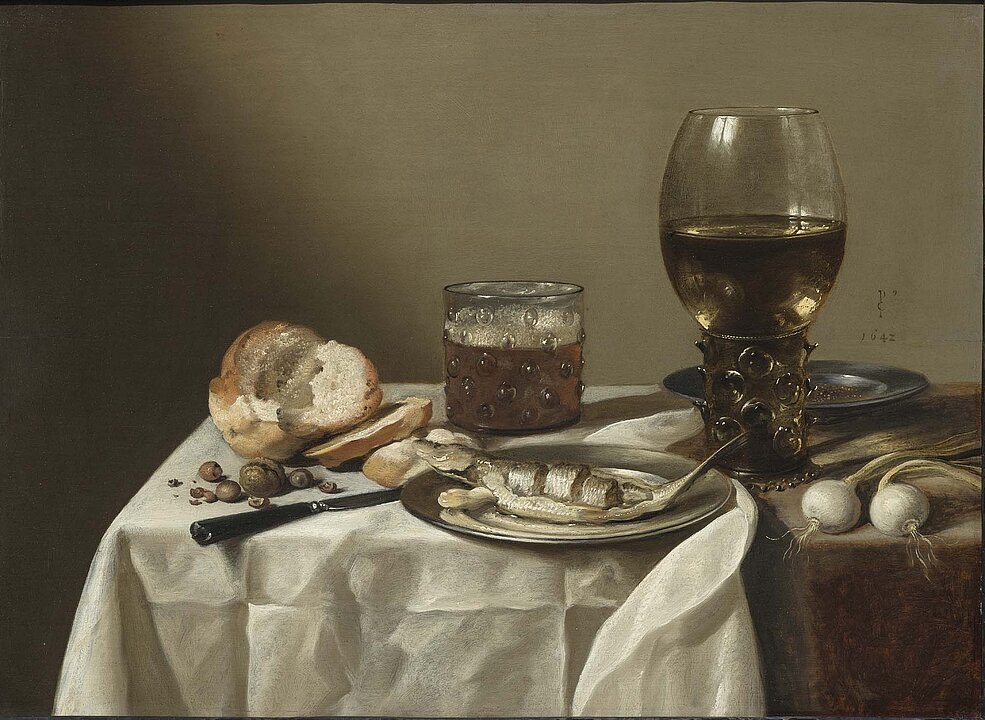The increased interest in nature turns the latter itself into a subject of art. The study of nature leads to imitation – imitatio. The detailed reproduction of plants and animals aims to demonstrate the technical prowess of the painter. Crops and the spoils of the hunt assume a tangible presence, as if they were just been harvested or killed. All this also points to a deep longing for satiation, for the fulfilment of a basic human need, often an illusory hope at a time marked by deprivation.
The opulence of nature becomes a means of representation: Its portrayal is intended to reflect a well-governed country. Lavish depictions of game and fish, the rich abundance of crops, of larders brimming with food, all point to prosperity. They serve as proof of the regent’s ability to act in the best interests of the country.






















